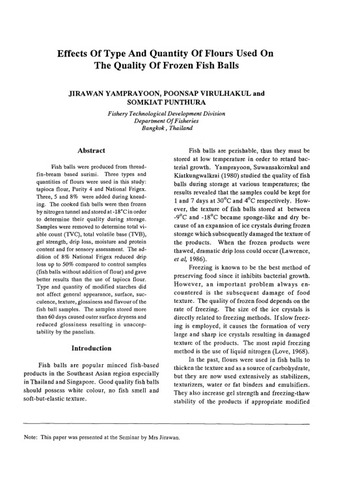Effects of type and quantity of flours used on the quality of frozen fish balls
Share
Abstract
Fish balls were produced from thread-fin-bream based surimi. Three types and quantities of flours were used in this study: tapioca flour, Purity 4 and National Frigex. Three, 5 and 8% were added during kneading. The cooked fish balls were then frozen by nitrogen tunnel and stored at -18°C in order to determine their quality during storage. Samples were removed to determine total viable count (TVC), total volatile base (TVB), gel strength, drip loss, moisture and protein content and for sensory assessment. The addition of 8% National Frigex reduced drip loss up to 50% compared to control samples (fish balls without addition of flour) and gave better results than the use of tapioca flour. Type and quantity of modified starches did not affect general appearance, surface, succulence, texture, glossiness and flavour of the fish ball samples. The samples stored more than 60 days caused outer surface dryness and reduced glossiness resulting in unacceptability by the panelists.
Suggested Citation
Yamprayoon, J., Virulhakul, P., & Punthura, S. (1991). Effects of type and quantity of flours used on the quality of frozen fish balls. In K. K. Hooi, K. Miwa, & M. B. Salim (Eds.), Proceedings of the Seminar on Advances in Fishery Post-Harvest Technology in Southeast Asia: Singapore, 6-11 May, 1991 (pp. 176-186). Singapore: Marine Fisheries Research Department, Southeast Asian Fisheries Development Center.

